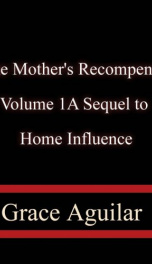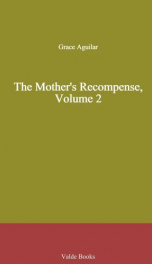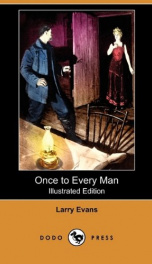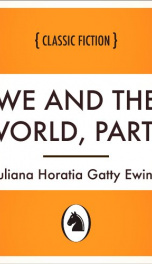Evans Edward Everett
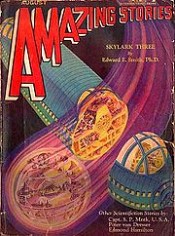
E. E. Smith, also Edward Elmer Smith, Ph.D., E. E. "Doc" Smith, Doc Smith, "Skylark" Smith, and (to family) Ted (May 2, 1890 - August 31, 1965) was a food engineer (specializing in doughnut and pastry mixes) and early science fiction author who wrote the Lensman series and the Skylark series, among others. He is sometimes referred to as the father of Space Opera. Edward Elmer Smith was born in Sheboygan, Wisconsin on May 2, 1890 to Fred Jay Smith and Caroline Mills Smith, both staunch Presbyterians of British ancestry.[1] His mother was a teacher born in Michigan in February 1855; his father was a sailor, born in Maine in January 1855 to an English father.[2] They moved to Spokane, Washington the winter after Edward Elmer was born,[3] where Mr. Smith was working as a contractor in 1900.[2] In 1902 the family moved to Seneaquoteen,[4] near the Pend Oreille River, in Kootenai County, Idaho.[5] He had four siblings, Rachel M. born September 1882, Daniel M. born January 1884, Mary Elizabeth born February 1886 (all of whom were born in Michigan), and Walter E. born July 1891 in Washington.[2] In 1910, Fred and Caroline Smith and their son Walter were living in the Markham Precinct of Bonner County, Idaho; Fred is listed in census records as a farmer.[6] Smith worked primarily as a manual laborer until he injured his wrist, at the age of 19, while escaping from a fire. He attended the University of Idaho, where he was installed in the 1984 Class of the University of Idaho Alumni Hall of Fame;[7] he entered its prep school in 1907, and graduated with two degrees in Chemical Engineering in 1914. He was president of the Chemistry Club, the Chess Club, and the Mandolin and Guitar Club, and captain of the Drill and Rifle Team; he also sang the bass lead in Gilbert and Sullivan operettas.[8] His undergraduate thesis was Some Clays of Idaho, co-written with classmate Chester Fowler Smith, who died in California of tuberculosis the following year, after taking a teaching fellowship at Berkeley.[9] It is not known whether the two people were related. On October 5, 1915, in Boise, Idaho[10] he married Jeanne Craig MacDougall, the sister of his college roommate, Allen Scott (Scotty) MacDougall.[11] (Her sister was named Clarissa MacLean MacDougall; the heroine of the Lensman novels would later be named Clarissa MacDougall.) Jeanne MacDougall was born in Glasgow, Scotland; her parents were Donald Scott MacDougall, a violinist, and Jessica Craig MacLean. Her father had moved to Boise, Idaho when the children were young, and later sent for his family; he died while they were en route in 1905. Jeanne's mother, who remarried businessman and retired politician John F. Kessler in 1914[12] worked at, and later owned, a boarding house on Ridenbaugh Street. The Smiths had three children: After graduating from college, he worked as a junior civil service chemist for the National Bureau of Standards in Washington, D.C., working on standards for butter and oysters.[16] He may have served as a Lieutenant in the U.S. Cavalry in World War I, but in what capacity is not known;[17] he apparently requested exemption from the draft, partly because his wife was solely dependent on him, and partly perhaps because of his service for the war effort.[18] Smith received a Master's degree in Chemistry from George Washington University in 1917, studying under Charles E. Munroe.[4] He earned a Doctorate in Chemical Engineering,[16] in 1918,[19] emphasizing food engineering with a thesis entitled The effect of bleaching with oxides of nitrogen upon the baking quality and commercial value of wheat flour, which was published in 1919.[20] Warner and Fleischer instead give the thesis title as The Effect of the Oxides of Nitrogen upon the Carotin Molecule — C40H56, which is difficult to explain. Sam Moskowitz instead gives the date of the degree as 1919,[16] which may result from differences between the thesis submission date, the defence date and the degree certification date. In 1919 Dr. Smith took a job as chief chemist for F. W. Stock & Sons of Hillsdale, Michigan, at one time the largest family-owned mill east of the Mississippi,[21] working on doughnut mixes.[4] One evening in 1915, while the Smiths were visiting his former classmate from the University of Idaho, Dr. Carl Garby, who had also moved to Washington and lived near the Smiths in the Seaton Place Apartments in Washington D.C. with his wife Lee Hawkins Garby, a long discussion about journeys into deep space ensued. It was suggested to Smith that he should write down his ideas and speculations as a story about interstellar travels. Although interested, he felt that some amounts of romantic elements was required as well, a task which he found himself uncomfortable with. Mrs. Garby would then make an offer to take care of the love interest and the romantic dialogue, and Smith eventually decided to give it a try. The source of inspirations for the main characters in the novel was themselves; the Seatons were based on the Smiths while the Cranes were drawn from the Garbys.[22] About a third of The Skylark of Space was completed by the end of 1916, when they gradually abandoned work on it. Late in 1919, after moving to Michigan, one evening Smith was baby-sitting (presumably for Roderick) while his wife attended a movie; he resumed work on The Skylark of Space, finishing it in the spring of 1920.[23] He submitted it to many book publishers and magazines, spending more in postage than he would eventually receive for its publication. He received an encouraging rejection letter from Bob Davis, editor of Argosy, in 1922, saying that he liked the novel personally, but that it was too far out for his readers.[24] (According to Warner, but no other source, Dr. Smith began work on the sequel, Skylark III, before the first book was accepted.) Finally, upon seeing the April 1927 issue of Amazing Stories, he submitted it to the magazine; it was accepted, initially for $75, later raised to $125.[25] It was published in the August – October 1928 issues. It was such a success that managing editor T. O'Conor Sloane requested a sequel before the second installment had been published.[26] Mrs. Garby wasn't interested in collaborating further, so Dr. Smith began work on Skylark Three on his own.[27] It was published in the August through October 1930 issues of Amazing. (In 1930 the Smiths were living in Michigan, at 33 Rippon Avenue in Hillsdale.[28]) This was as far as he had planned to take the Skylark series; it was praised in Amazing's letter column,[29] and he was paid 3/4¢ per word, surpassing Amazing's previous record of half a cent.[30] Dr. Smith then began work on what he intended as a new series, starting with Spacehounds of IPC,[31] which he finished in the autumn of 1930.[32] In this novel he took pains to avoid the scientific impossibilities which had bothered some readers of the Skylark novels.[33] Even in 1938, after he had written Galactic Patrol, Dr. Smith considered it his finest work;[32] he later said of it, "This was really scientific fiction; not, like the Skylarks, pseudo-science";[34] and even at the end of his career he considered it his only work of true science fiction.[35] It was published in the July through September 1931 issues of Amazing, but with unauthorized changes by Sloane.[36] Fan letters in the magazine complained about the novel's containment within the solar system, and Sloane sided with the readers. So when Harry Bates, editor of Astounding Stories, offered Smith 2¢/word—payable on publication—for his next story, he agreed; this meant that it could not be a sequel to Spacehounds.[30] This book would be Triplanetary, "in which scientific detail would not be bothered about, and in which his imagination would run riot."[32] Indeed, characters within the story point out its psychological[37] and scientific[38] implausibilities, and sometimes even seem to suggest self-parody.[39] At other times they are conspicuously silent about obvious implausibilities.[40][41] The January 1933 issue of Astounding announced that Triplanetary would appear in the March issue, and that issue's cover illustrated a scene from the story, but Astounding's financial difficulties prevented the story from appearing.[42] Dr. Smith then submitted the manuscript to Wonder Stories, whose editor, Charles D. Hornig, rejected it, later boasting about the rejection in a fanzine.[43] He finally submitted it to Amazing, which published it beginning in January 1934, but for only half a cent a word. Shortly after it was accepted, F. Orlin Tremaine, the new editor of the revived Astounding, offered one cent a word for Triplanetary; when he learned that he was too late, he suggested a third Skylark novel instead.[44] In the winter of 1933-4 Dr. Smith worked on The Skylark of Valeron, but he felt that the story was getting out of control; he sent his first draft to Tremaine, with a distraught note asking for suggestions. Tremaine accepted the rough draft for $850, and announced it in the June 1934 issue, with a full-page editorial and a three-quarter page advertisement. The novel was published in the August 1934 through February 1935 issues. Astounding's circulation rose by 10,000 for the first issue, and its two main competitors, Amazing and Wonder Stories fell into financial difficulties, both skipping issues within a year. [45] In January 1936 Dr. Smith took a job, for salary plus profit-sharing, as a food technologist (a cereal chemist) at the Dawn Doughnut Company of Jackson, Michigan.[46] This initially entailed almost a year's worth of eighteen-hour days and seven-day workweeks. Individuals who knew Dr. Smith confirmed that he had a role in developing mixes for doughnuts and other pastries, but the contention that he developed the first process for making powdered sugar adhere to doughnuts cannot be substantiated.[47] Dr. Smith was reportedly dislocated from his job at Dawn Doughnuts due to pre-war rationing in early 1940.[48] Dr. Smith had been contemplating writing a "space-police novel" since early 1927;[49] once he had "the Lensmen's universe fairly well set up," he reviewed his science fiction collection for "cops-and-robbers" stories. He cites Clinton Constantinescue's "War of the Universe" as a negative example, and Starzl and Williamson as positive ones.[50] Tremaine responded extremely positively to a brief description of the idea.[51]
do you like this author?
What readers are saying
What do you think? Write your own comment on this book!
write a commentWhat readers are saying
What do you think? Write your own comment on this author!
write a commentBook list

Masters of Space
Series:
Unknown
Year:
Unknown
Raiting:
3.5/5
* Illustrated by Berry --This text refers to an alternate Paperback edition.
Show more
add to favoritesadd In favorites
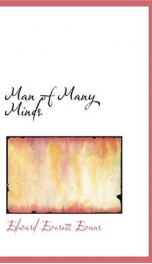
Man of Many Minds
Series:
Unknown
Year:
Unknown
Raiting:
4/5
A young man is expelled from the Space Academy just during his final exams because he was presumable cheating at the exam. However, it turns out that a secret service gets interested in the main character and wants to hire him for a secret mission. And now he has to fly to a far-away planet for investigation and following the events there to get some information for the secret service. At first this mission seems easy and even entertaining. However, nobody expects that some difficulties bar his road... This book is a very good example of one of the first science-fiction works which are definitely worth of attention.
Show more
add to favoritesadd In favorites
Book list

Masters of Space
Series:
Unknown
Year:
Unknown
Raiting:
3.5/5
* Illustrated by Berry --This text refers to an alternate Paperback edition.
Show more
add to favoritesadd In favorites

Man of Many Minds
Series:
Unknown
Year:
Unknown
Raiting:
4/5
A young man is expelled from the Space Academy just during his final exams because he was presumable cheating at the exam. However, it turns out that a secret service gets interested in the main character and wants to hire him for a secret mission. And now he has to fly to a far-away planet for investigation and following the events there to get some information for the secret service. At first this mission seems easy and even entertaining. However, nobody expects that some difficulties bar his road... This book is a very good example of one of the first science-fiction works which are definitely worth of attention.
Show more
add to favoritesadd In favorites
What readers are saying
What do you think? Write your own comment on this author!
write a commentif you like Evans Edward Everett try:
readers also enjoyed
What readers are saying
What do you think? Write your own comment on this author!
write a commentif you like Evans Edward Everett try:
readers also enjoyed
Do you want to read a book that interests you? It’s EASY!
Create an account and send a request for reading to other users on the Webpage of the book!

